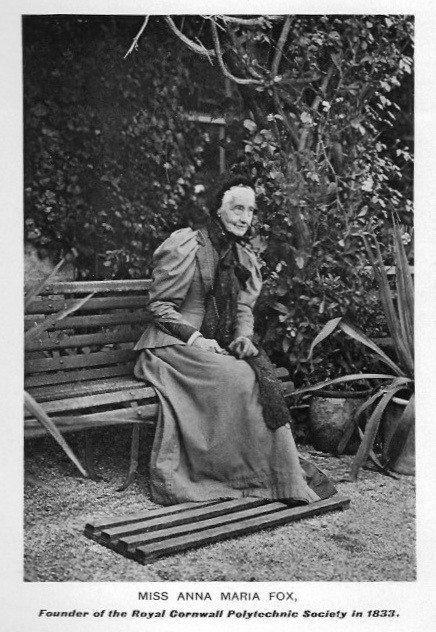The Poly
24 Church St, Falmouth : 01326 319461
The Royal Cornwall Polytechnic Society
What's On Calendar
Have a look at the calendar text here to see what's coming up.
THE CHARITY
The Poly is a thriving charity promoting engagement in the arts, sciences and Cornish history through film, live events, exhibitions, lectures and workshops, with our roots in artistic and technological innovation and local industry.
Our vision is to be a place where everyone feels welcome to be entertained, engage with culture, and be creative.
Our Mission, as a key cultural and community hub in Cornwall, is to provide inspiring, inclusive and innovative entertainment, learning and development opportunities across the arts, sciences and history.
Registered charity 1081199.
 OUR HISTORY
OUR HISTORY
The Cornwall Polytechnic Society (the Poly) was founded in 1833, the inspiration of Anna Maria and Caroline, the teenage daughters of Robert Were Fox of G.C. Fox & Co, a prominent Falmouth firm of shipping agents. The firm was also joint owner of the Perran Foundry, whose workmen constantly brought models and inventions for inspection, and new ideas for improving the working of the foundry. With their father’s encouragement, a Society was formed ‘To promote the useful and fine arts, to encourage industry, and to elicit the ingenuity of a community distinguished for its mechanical skill’.
The Society was certainly founded on philanthropic principles, but President Sir Charles Lemon, seven prominent Cornish Vice Presidents, and Chairman Charles Fox, were all successful businessmen, for whom whatever ‘encouraged industry’ should also be good for business. With this in view, the founders determined that a large Hall should be erected by the Society to accommodate an annual exhibition of new inventions, especially mechanical ones, in an era when science was continually revealing new wonders to the world.
For the first two years, exhibitions were held in the Falmouth Classical School, which proved so popular, and were so overcrowded, that the Committee decided that the new Hall and permanent home for the Society should be built as soon as possible.
You can read more about the history of The Poly in the following books:
Founding The Poly describes the industrial conditions that called for the creation of the new society.
Cornwall's House of Inventions tells the story of those inventions and the Hall that was built to exhibit them and how The Poly ended up re-inventing itself.
PDF versions of those books can be found here:
Picture - Anna Maria Fox, Founder of the Royal Cornwall Polytechnic Society.
Christmas with The Fast Track Big Band
What happens when you mix a couple of pints of Spingo at the Blue Anchor in Helston? it results in a big band! Come and...
Find out moreHah! BUMHUG
"Better than Dickens, as good as The Muppets” HAH! Bumhug is a Christmas Carol, but not like you’ve seen! ...
Find out moreWhere Kea Plums Grow
Local historian Nigel Baker will talk about the origin of the Coombe orchards and the associated ‘industries’ such...
Find out more



 Calendar
Calendar